Two fires that defined Shelley’s historic past
SHELLEY – Two Shelley Junior High Schools burned to the ground 26 years apart. Yet, the circumstances surrounding their demise would make one think both fires were intentionally set. However, a closer look tells the real story.
1976 Fire
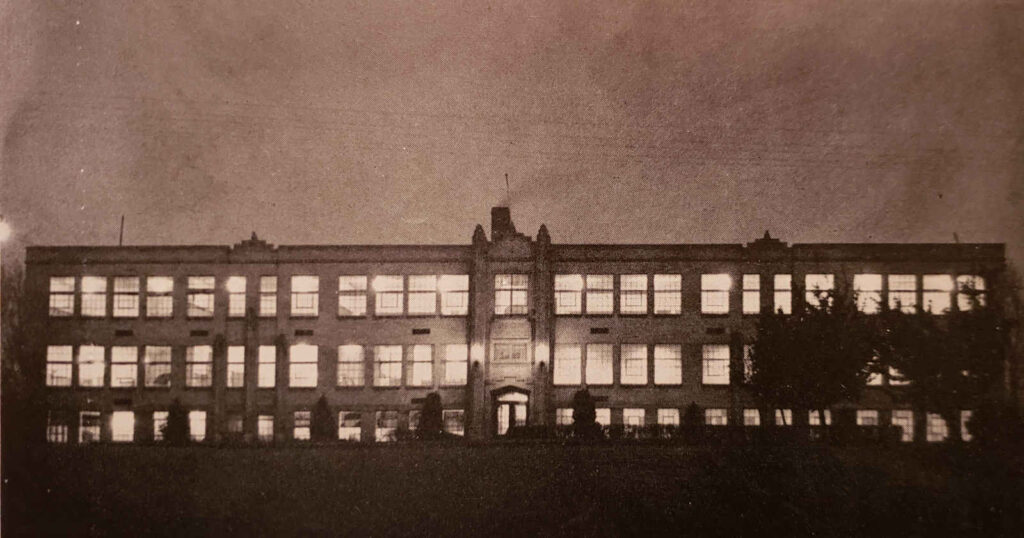
It was late on May 20, 1976, when Rodney Moore and Mike Steele cruised Shelley’s quiet streets. As they turned north on Short Street and traveled along the old Junior High School’s front, they noticed something extraordinary.
They could see flames flickering through the gym’s large bay windows. They immediately drove to a payphone at Young’s Rexall Drug on State Street to report the fire.
Mike Carter and his wife Debbie lived in an apartment a block away from the Junior High. Carter heard the fire whistle blow, summoning volunteer firefighters to the firehouse situated two blocks west of the school.
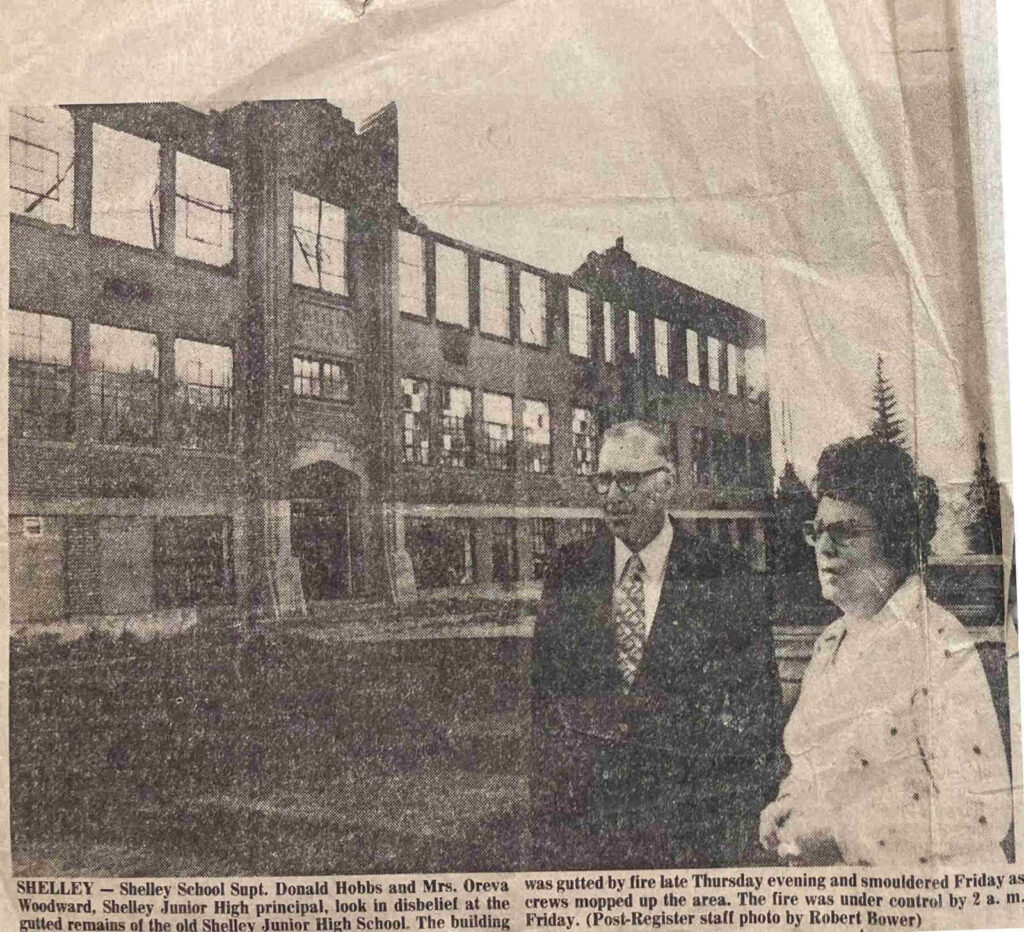
“I heard the fire engine coming up the street. So, I stepped out the door and just walked down to the corner to see where it was going,” Carter said. “Then, I looked up the other way a half a block and saw the school in flames.” The gym was burning at that point, with smoke and flames pouring out of it.
People, who had rushed to the scene, entered the building’s front doors and ran up the stairs to the office to retrieve what they could. Carter helped them carry out typewriters and records to the building’s front yard. However, their rescue attempts were cut short by the fast-moving blaze, which engulfed the entire building within minutes.
The fire department took a defensive posture at the north and east sides of the burning building to save its cafeteria annex and the new Junior High building, which was being constructed and slated to be completed in July of that year. Today, this building is known as the Hobbs Middle School.
Carter said the fire department saved the school’s annex to the north and the new school behind it. Years later, Carter volunteered as a fireman for the department and later became Fire Chief over the Shelley – Firth Rural Fire District. He is now retired.
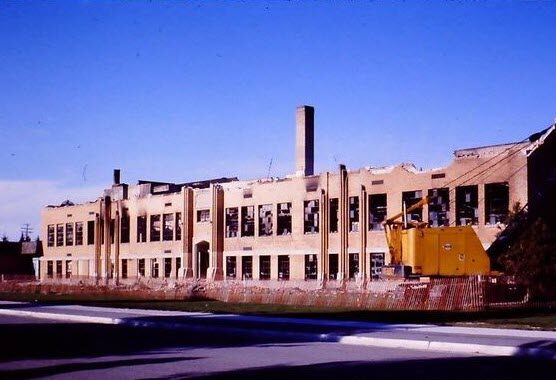
2002 Fire

On May 23, 2002, around 7:30 p.m., brothers and volunteer firefighters Isaac and Shawn Eaton were alerted by radio to smoke on the Junior High School’s upper floor. At the time, they were attending their sister’s graduation at the high school on West Fir. The two left the ceremony and drove to the fire station, located across the street from Basic American and two blocks northwest of the junior high school.
“We ran over to the firehouse and grabbed Engine 1 and were at the school within five minutes. On the way, we fully anticipated this would be a typical smoke call where you find a light ballast or something. On these calls, you turn off the power, clear out the smoke, and that’s it. We fully intended we would be going back to my sister’s graduation,” Isaac said,
Once at the school, they grabbed their gear and ran to the second floor. As they rounded the top of the stairs, they could see smoke hovering below the ceiling.
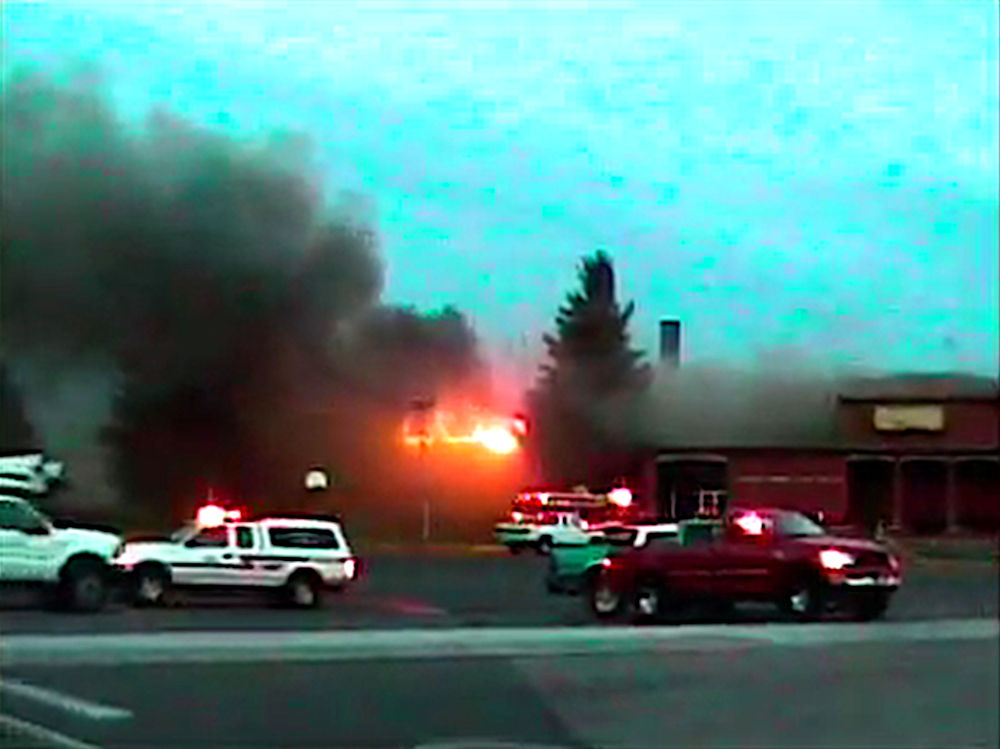
“Now, we didn’t see any flames until we got into the old biology room where we saw a ceiling tile on top of the teacher’s desk burning,” Isaac said. “And, that’s when we knew we were in trouble.”
Isaac and Shawn attempted to create a larger hole in the ceiling by jamming their pike poles into the tiles.
“The tiles were so old and crisp, it was like we were hitting drywall,” Isaac said.
The other problem they faced was trying to ventilate smoke from the room. The high school had changed its bay windows to Lexan windows, a tough polycarbonate resin used in car headlights, windshields and eyeglass wear. These windows only opened a few inches. They tried to ax the windows and even used a chain saw, which got stuck in the material.
“We were behind the eight-ball at every turn,” Isaac said.
The tile that dropped onto the teacher’s desk introduced fresh oxygen to the fire, which now was rolling through the entire second floor’s attic, the small area between the ceiling tiles and the roof.
Soon, additional firefighters arrived at the scene. They brought fire hoses and began to fight the fire with water. But, because of the stubborn tiles and the fire’s size throughout the ceiling, their efforts were hampered.
Other firefighters gained access to the roof and attempted to create a hole to evacuate the heat. But the building had four layers of tar on its roof from years of upkeep and repair, which made cutting through it impossible.
Carter, now acting fire chief for the Shelley-Firth Rural Fire District, said the fire raced through the second floor’s ceiling area.
“As tiles fell, the entire ceiling began to burn and collapse onto the upper floor. The situation changed so fast, I was worried the guys wouldn’t be able to get out safely,” he said. “They just dropped their fire hoses and equipment and ran.”
Carter said they blew the fire engine’s horn repeatedly, telling everyone to evacuate the building and its roof. They decided to fight from a defensive position.

By 8:00 p.m., the fire had broken through the roof of the building’s classroom section. Fire crews from Blackfoot, Ammon, Idaho Falls, and Idaho National Laboratory were called to the scene to fight the blaze. Air Idaho evacuated a firefighter who was overcome by smoke.
Eventually, the fire worked its way into the gymnasium, which had a common attic with the building’s classroom section, Carter said. The roof of the gym collapsed around 10 p.m.
Firefighters fought the fire for nine hours. It was eventually extinguished around 5 a.m. the next morning, according to the Post Register. The fire had consumed most of the building, except for the school’s auditorium and cafeteria section. This section, which was added to the building in 1968, was largely spared.
Carter said, however, the fire had worked its way into the auditorium section’s attic by the stage. The next morning, a fire crew from Idaho Falls used their infrared camera to discover this hot spot and immediately extinguished it.
Suspicious circumstances
For many in the community, it seemed quite a coincidence for two schools in the same district to burn to the ground just weeks, if not days, before the end of the school year. Some began to wonder if the fires were set intentionally.
Both schools burned when the school boards were in the process of deciding whether to keep, tear down or construct a new school.
According to the Shelley Pioneer, in May of 1976, the school board wanted to keep the old junior high building and move the sixth grade into it. At the same time, others wanted it torn down because it was old and out-of-date.
Still, others wanted the district to keep the building because it was a historic structure. It was constructed in 1915 and served as the district’s high school until 1953. It was used as a junior high until it burned.
The school board had planned to meet in the school’s library to discuss this very matter. But before the scheduled meeting, the fire made the decision for them.
Charles Higham served on the school board at that time and understood the conflicting interests in the community. On the night of the fire, he stood on the canal bank with Dale Jolley and watched the school burn.
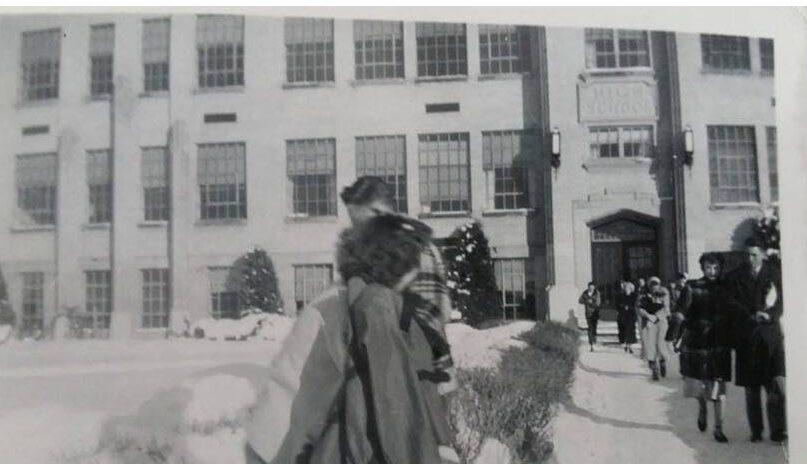
While standing there, Dale turned to him and jokingly said, “You know what’s happened here is Heavenly Father took pity on the poor struggling school board who didn’t know what to do with that building.”
The State fire marshal and the insurance adjuster were suspicious of the fire’s origin and took the extra time to investigate its cause. According to an article in the Post Register, they ultimately concluded the fire started by faulty electrical wiring between the auditorium ceiling and the classroom above it.
Higham said the insurance payout totaled approximately $950,000. The school board used the money to construct Stuart Elementary.
May 23, 2002, around 5 p.m. the school board held a special session to determine where to construct a new elementary school.
“The meeting was quite contentious with some people wanting the new school to go here and others wanting it to go there. And some not wanting the district to construct a new school at all,” said Vicki Johnson, a school board member at the time.
Ultimately, the board decided to construct a new school at Baseline Road and Milton’s northeast corner. Three hours later, the junior high caught fire and burned to the ground. The destruction of the junior high allowed for Sunrise Elementary to be constructed in its place.
Unlike the first fire, neither the State fire marshal nor the insurance adjuster was suspicious of the fire’s origin.
According to an article in the Shelley Pioneer, the State fire marshal, the local fire chief, and the insurance adjuster all agreed the fire began in a lighting system on the second floor and smoldered for hours before detection.
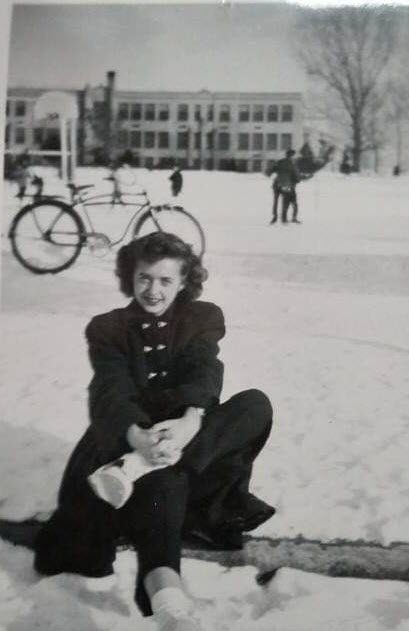
Amy Palmer, who was part of the Quick Response Unit in 2002, told Community Pioneer she attended a meeting in the Junior High School’s library the night before it burned.
As she walked into the library, she smelled an acidy burning smell. It was the same smell she had experienced when her home caught fire years before. She told everyone at the meeting, “something is on fire here.”
Although the fire seems suspicious to some, the facts prove otherwise. While the 1976 fire burned quickly, and its origin was difficult to conclude, the 2002 fire smoldered for more than 24 hours. The fires were nothing more than coincidental. So maybe Dale Jolley had it right. As Einstein once said, “Coincidences are God’s way of remaining anonymous.â€


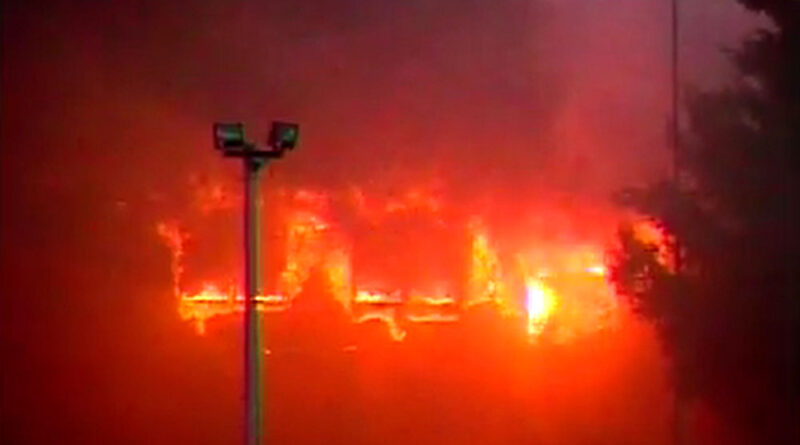
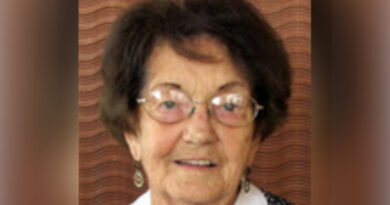
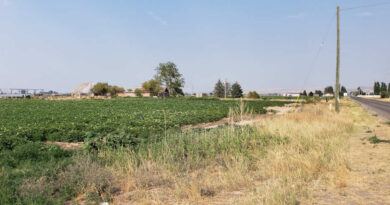

Thank you for this , interesting !
It was interesting to read about the two fires. Our family moved to Shelley when I was in 8th Grade, evidently just weeks after the first fire, though I don’t recall seeing the remains of it. I completed high school in the second building five years later. When we held the Class of ’81 five-year reunion, they were just opening the “new” high school, though I don’t think I ever drove out to look at the new building.
Thanks for sharing this story. Makes me feel that connection to Shelley again.